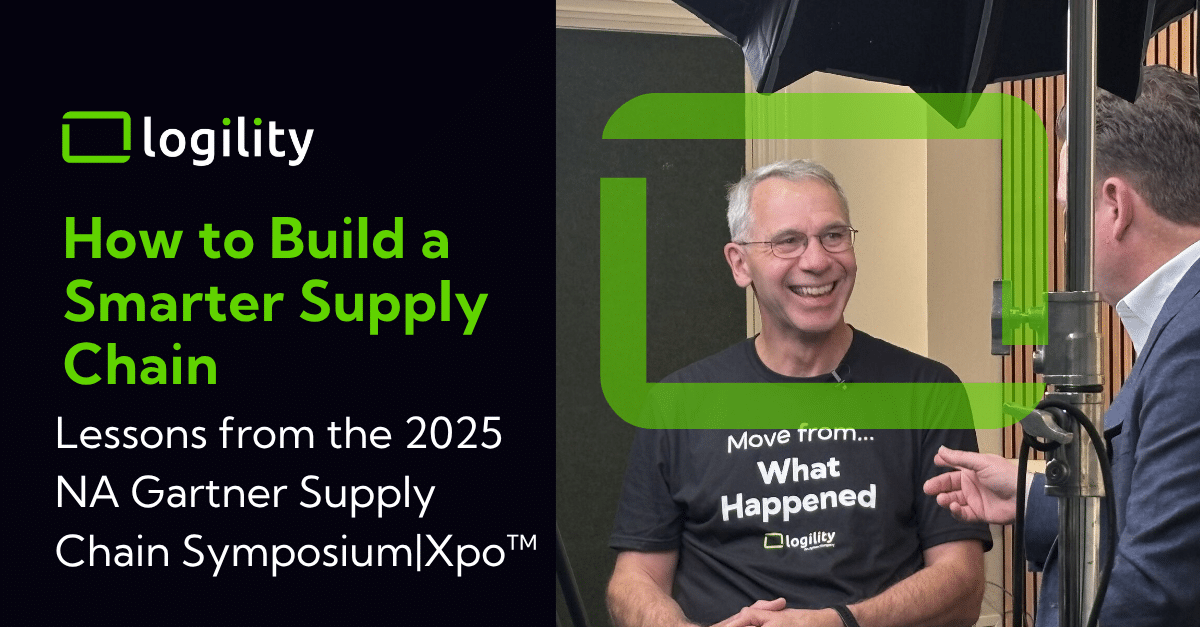
S&OP and Multi-Horizon Integrated Business Planning
Manual supply chain processes are a real headache. Creating and comparing business scenarios in spreadsheets are fruitless exercises in glancing in the rearview mirror rather than looking ahead at the opportunities and risks emerging on the horizon. And next to impossible is creating plans in a timely manner when monitoring unrelated KPIs across multiple disconnected sources of data.
Supply chain organizations are no strangers to this frustration. As they approach an integrated business planning (IBP) level of maturity in their sales and operations planning (S&OP) process, they are quickly realizing that their traditional tools and techniques are falling short. In webinar, 3 Ways to Pivot Faster with Multi-Horizon Integrated Business Planning , Logility supply chain experts share their thoughts:
“The problem companies face is not having their systems or processes integrated to manage their data well,” observes Lachelle Buchanan, Vice President of Product Marketing at Logility. “They aren’t making decisions effectively – everything happens in isolation.”
Ultimately, companies must balance demand and supply quickly and responsively while choosing the right model to minimize financial implications. While historically easier said than done, this goal can be attained through a modern supply chain platform that enables flexible scenario planning across strategic, operational, and lead-time horizons.
Envisioning a path to a future-ready supply chain with S&OP
For decades, companies have relied on S&OP as a decision-making process that matches demand and supply to align supply chain plans and business strategies. In most cases, this approach has become an agent of change that dramatically reduces costs and improves customer service.
However, the typical process flow cannot push past the challenges getting in the way of running a highly effective S&OP process and realizing the associated benefits. Such steps include innovation and strategy review, demand review, supply review, financial integration, and executive business review. However, the ability to plan the business across multiple time horizons is often still missing.
“When looking at KPIs inside one S&OP horizon, the level of customer service most likely hits a floor and never leaves it,” shares Matt Gorman, Senior Business Consultant at Logility. “Suppose you have one distribution center in Los Angeles. Your customer service and operational costs will always be impacted by your need to ship orders across the country.”
Identifying where you can improve that reality requires a clear-eyed evaluation of the network design and how it needs to perform across many horizons. Do you want to build new facilities? Is another distribution center needed on the East Coast of the United States? A good S&OP process will quickly onboard new suppliers and vendors to satisfy the various requirements for setting up the network for success as the business expands?
According to Gorman, that level of clarity and open-minded analysis, delivered through multi-horizon integrated business planning, paves the way to the S&OP maturity of a resilient supply chain. “One of the things we hear in the market today is the desire to assess the network more as part of the S&OP process. That’s where business groups use these long-term strategies around customer service on a month-to-month basis – rather than every three years as done in the past – to pivot their fulfillment capabilities quickly,” he reflects.
Putting to work an advanced approach to planning
Multi-horizon integrated business planning delivers what its name implies – planning and scheduling optimization across multiple time domains, from the short term to the medium and long term. This, of course, is an advancement in planning precision, looking at models to not only set staffing levels but measure the network design and fine-tune it continuously to optimize service levels and minimize operational costs.
Assessing historical data from yesterday and real-time data from today can give your supply chain organization a complete picture of its performance, rising risks, and emerging opportunities to plan for tomorrow. With an S&OP solution, you can easily create scenarios that flexibly reflect various real-world factors that affect the supply chain, such as shifts in demand, raw material availability, internal and external production capacities, costs, and pricing strategies.
Furthermore, multi-horizon integrated business planning facilitates the analysis and comparison of multiple scenarios all at once from an adaptable and meaningful perspective. This tactic enables a cross-functional alignment of key performance indicators, including projected fulfillment, capacity utilization, revenue, and profit, as well as anticipated missed future demand and profit.
Continuously empowered to look ahead, your supply chain leaders and the rest of your executive leadership team can seamlessly align their operational plans with an aggregated view of what’s to come across different time periods in the future.
Learn how multi-horizon integrated business planning enables you to adapt quickly to changing market conditions, reduce operational risk, and gain a competitive advantage in today’s fast-paced business environment. Watch our webcast “3 Ways to Pivot Faster with Multi-Horizon Integrated Business Planning.“



